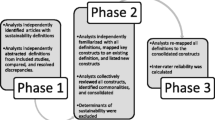Abstract
Despite an abundance of scientific evidence supporting the use of guidelines, adherence to asthma practice guidelines by physicians generally is low, regardless of provider and patient characteristics. As a result, scientific information, obtained with great effort and at huge expense, is not being translated into clinical practice. To remedy this, we developed a disease management program that emphasizes alteration of provider behavior using operant conditioning. We did this by placing asthma educators in private offices for up to 8 weeks. The educators used a combination of problembased learning, role modeling, and operant conditioning with positive reinforcement to affect behavior change. As a result of these behavior changes, by the end of 8 weeks the cost to treat asthma patients decreased, despite an increase in the cost of medications. We concluded that behavior-oriented programs targeted at provider offices can lead to improved asthma care while reducing costs.
Similar content being viewed by others
References and Recommended Reading
NAEPP Expert Panel Report 2: Clinical Practice Guidelines: guidelines for the diagnosis and management of asthma. NIH Publication No. 98-4051. Rockville, MD: US Department of Health and Human Services, Public Health Service, National Institutes of Health, National Heart, Lung, and Blood Institute; 1997.
Lara M, Rosenbaum S, Rachelefsky G, et al.: Improving childhood asthma outcomes in the United States: a blueprint for policy action. Pediatrics 2002, 109:919–930. This important article outlines national actions that need to be taken to reduce the morbidity due to asthma. Methods for measuring outcomes are described as well as specific recommendations for action.
Georgiou A, Buchner DA, Ershoff DH, et al.: The impact of a large-scale, population-based asthma management program on pediatric asthma patients and their caregivers. Ann Allergy Asthma Immunol 2003, 90:308–315. If there is any question that asthma management programs can impact asthma morbidity, this report dispels it. Asthma programs can significantly reduce morbidity and the cost of caring for patients who have asthma. They should be an integral part of any health plan’s strategy.
Roghmann MC, Sexton M: Adherence to asthma guidelines in general practices. J Asthma 1999, 36:381–387. Despite an abundance of evidence-based guidelines for management of asthma, adherence is poor—particularly in primary care settings. This is the reason for the current report.
Kennerly D, Millard M, Moore V: Development and dissemination of minimum standards of care for asthma. J Healthc Qual 2000, 22:22–28.
Taylor DM, Auble TE, Calhoun WJ, Mosesso VN, Jr: Current outpatient management of asthma shows poor compliance with International Consensus Guidelines. Chest 1999, 116:1638–1645.
Yuksel N, Ginther S, Man P, Tsuyuki RT: Underuse of inhaled corticosteroids in adults with asthma. Pharmacotherapy 2000, 20:387–393.
Buchner DA, Carlson AM, Stempel DA: Patterns of anti-inflammatory therapy in the post-guidelines era: a retrospective claims analysis of managed care members. Am J Manag Care 1997, 3:87–93.
Crim C: Clinical practice guidelines vs actual clinical practice: the asthma paradigm. Chest 2000, 118(2 Suppl):62S-64S.
O’Dowd LC, Fife D, Tenhave T, Panettieri RA: Attitudes of physicians toward objective measures of airway function in asthma. Am J Med 2003, 114:391–396.
Lagerlov P, Loeb M, Andrew M, Hjortdahl P: Improving doctors’ prescribing behaviour through reflection on guidelines and prescription feedback: a randomised controlled study. Qual Health Care 2000, 9:159–165.
Veninga CC, Lagerlov P, Wahlstrom R, et al.: Evaluating an educational intervention to improve the treatment of asthma in four European countries. Drug Education Project Group. Am J Respir Crit Care Med 1999, 160:1254–1262.
Miller K, Ward-Smith P, Cox K, et al.: Development of an asthma disease management program in a children’s hospital. Curr Allergy Asthma Rep 2003, In press. Health plan-based disease management programs have significant advantages over hospital-based ones in that they manage populations wherever they go, whereas hospitals only have access to patients when seen. Even so, a hospital-based program can affect substantial reductions in morbidity if designed carefully. This report describes the development of a hospital-based disease management program that has achieved impressive results.
Thomson O’Brien MA, Oxman AD, David DA, et al.: Educational outreach visits: effects on professional practice and health care outcomes. Cochrane Database Syst Rev 2002, 2:CD000409.
Portnoy JM, Jones EM: Diagnosing asthma in young children. Curr Allergy Asthma Rep 2002, 2:447–452. Asthma cannot be treated if it is not diagnosed. Underdiagnosis continues to be a substantial problem, in part because standardized criteria are not widely accepted. This article describes the issues related to this lack of acceptance, and it proposes specific criteria that can be used for making the diagnosis in any patient suspected of having asthma.
Haby MW, Waters E, Robertson CF, et al.: Interventions for educating children who have attended the emergency room for asthma. Cochrane Database Syst Rev 2001, 1:CD001290.
Scarfone RJ, Zorc JJ, Capraro GA: Patient self-management of acute asthma: adherence to national guidelines a decade later. Pediatrics 2001, 108:1332–1338.
Barbato A, Panizzolo C, Biserna L, et al.: Asthma prevalence and drug prescription in asthmatic children. Allerg Immunol (Paris) 2003, 35:47–51.
Toelle BG, Ram FS: Written individualised management plans for asthma in children and adults. Cochrane Database Syst Rev 2002, 3:CD002171.
Author information
Authors and Affiliations
Rights and permissions
About this article
Cite this article
Jones, E.M., Portnoy, J.M. Modification of provider behavior to achieve improved asthma outcomes. Curr Allergy Asthma Rep 3, 484–490 (2003). https://doi.org/10.1007/s11882-003-0059-9
Issue Date:
DOI: https://doi.org/10.1007/s11882-003-0059-9




